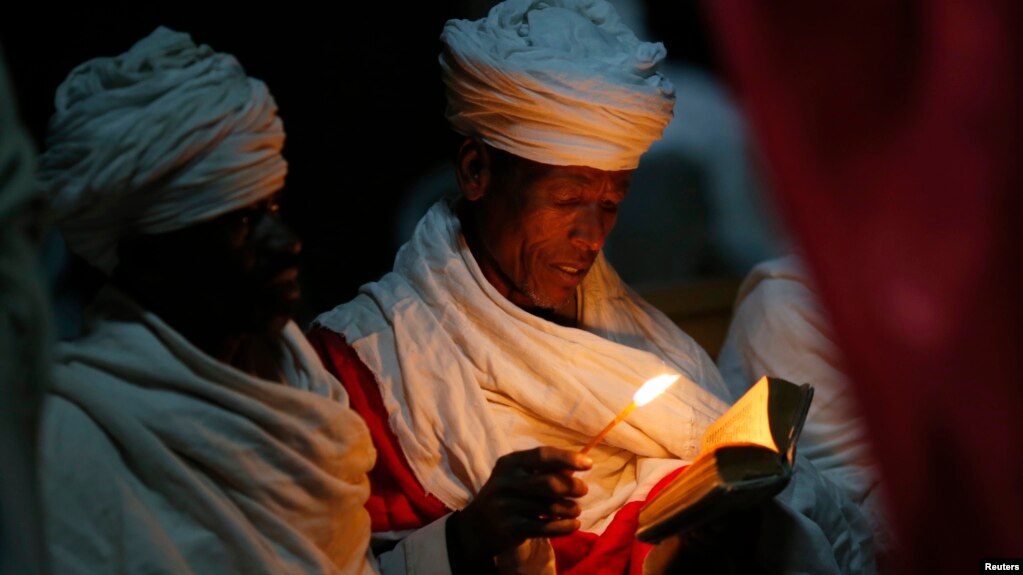
PART – III
Prostration in our Church? Order of prostration?
“Do not neglect prostration. It provides an image of man’s fall into sin and expresses the confession of our sinfulness. Getting up, on the other hand, signifies repentance and the promise to lead a life of virtue”.
In Our Church, the order of prostration is divided into three
Prostration (ሰጊድ) – touching the ground with forehead . For example during the Liturgy service the deacon order twice the congregation to bow down and worship God in fear before the prayer of Absolution saying, “Worship the Lord with fear” and the congregation bow and worship (falling down on the ground) with response, “Before Thee, Lord, we worship, and Thee do we glorify”. There are two kinds of prostration;
one is prostration of repentance and humility when we remember our sins and prostrate asking God to forgive us our sins and have mercy on us.
The other is prostration of honor and glory to the Lord and this is done even on Saturdays and Sundays liturgies such as when the priest prostrates before the altar of God.
Kneeling (አስተብርኮ)- touching the ground with knee. “When Solomon had finished praying all this prayer and supplication to the Lord, that he arose from before the altar of the Lord, from kneeling on his knees with his hands spread up to heaven” [1 King 8:54]. In the New Testament we see kneeling in prayer. When Peter healed Tabitha, “Peter put them all out, and knelt down and prayed. And turning to the body he said, “Tabitha, arise.” And she opened her eyes, and when she saw Peter she sat up” [Act 9:41]
Bowing (አድንኖ/ አትሕቶ) – stoop the head in homage. We do this kind of bowing twice during the liturgy service-
After the Lord’s prayer [Egzi’ Ota] the deacon order “Ye that are penitent, bow your heads” and the congregation bow their head while the priest prays inaudibly asking God to purify and prepare us for receiving the Holy Communion.
At the end of the Holy Liturgy just before the departure of the faithful, the deacon says,“Bow your heads in front of the Lord our God, that He may bless you at the hand of His servant the priest” the congregation bow their head saying, “Amen. May He bless us at the hand of his servant the priest..” and after the blessing the faithful departed to their house.
Days not allowed to do Prostration (ሰጊድ)
There are times where we only do kneeling and bowing. According to Fitha Negest, “ The fixed times during which the Prostration (ሰጊድ) is substituted by genuflexions [only kneeling (አስተብርኮ) and Bowing (አድንኖ/ አትሕቶ)] are Sundays, the days of Pentecost, the feast of Our Lord and Our Lady, and also after receiving Holy Communion”. [Fitha Negest 14:537; NIQYA 20]. The Holy Church has also ordered not to do Prostration (ሰጊድ) during the following monthly feasts –
Archangel Michael day – every 12th day of Geez calendar
St Mary’s day – every 21th of Geez Calendar
Baele Weld – every 29th of Geez calendar
The first Sunday [Saturday]
Sunday and during season of Pentecost
“Let all things be done decently and in order” (1 Cor 14:40).
God Bless
May the intercession of Our Holy Virgin Mary Be with all of us
Deacon Fresenbet
